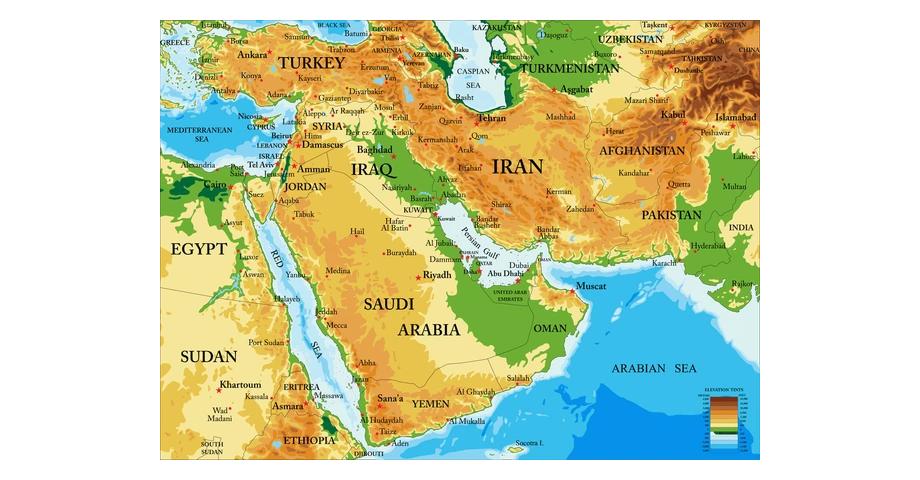
The question of whether Iran can be easily invaded through land is not just theoretical—it’s a pressing military and geopolitical concern, especially as the Israel-Iran war escalates in 2025. Iran’s rugged terrain, strategic depth, and historical resistance to foreign invasions make it one of the most challenging countries to conquer. This article examines Iran’s geographical defenses, historical precedents, and the implications for modern warfare, including the ongoing conflict with Israel.
1. Geographic Fortress – A Natural Fortress
Iran’s natural landscape makes a land invasion exceedingly difficult: Bounded by mountains, deserts, and seas: The Zagros and Elburz ranges, together with the Dasht-e Lut and Kavir deserts, form formidable natural barriers on every border
- Mountainous Terrain: The Zagros and Elburz Mountains dominate Iran’s borders, forming natural barriers against invasions. The Zagros range alone stretches 900 miles, making mechanized warfare nearly impossible.
- Desert Plateaus: The Dasht-e Kavir and Dasht-e Lut salt deserts are uninhabitable, forcing invaders to navigate narrow mountain passes where ambushes are easy.
- Limited Entry Points: The only viable invasion routes historically have been through Khuzestan (southwest) or Mashhad (northeast), both heavily fortified.
2. Hostile Terrain – Logistical Nightmare
-
Deserts offer no easy supply routes: Harsh terrain makes establishing and maintaining supply lines nearly impossible
-
Mountain passes are easily defended: Rugged terrain offers defenders hidden positions, easy ambush sites, and natural fortifications
3. Historical Lessons: Why Invaders Failed
-
Mongols (13th Century): Succeeded only after years of attritional warfare.
-
Ottomans (16th–18th Centuries): Captured western plains but couldn’t hold the Persian heartland.
-
Modern Comparisons: The U.S. invasions of Afghanistan (2001) and Iraq (2003)—both smaller and less mountainous—cost trillions and ended in stalemates. Iran is 4x larger than Iraq with triple the population
4. Human Geography & National Resolve
-
Hyper-defensive human terrain: Iran’s population is concentrated around military and infrastructure hubs, embedding defense deep into civilian areas.
-
Patriotic resistance: Even amidst internal unrest, foreign threats tend to provoke national unity—as seen during the Iraq–Iran war
5. Experts Weigh In
-
Military analysis: Experts argue that Iran’s terrain, infrastructure, and defense posture make it far more secure than Libya, Iraq, or Syria were—so much so that invading Iran would be strategically unfeasible reddit.com.
-
Geopolitical consensus: Analysts note air superiority alone won’t suffice—any land operation would require a massive, sustained commitment through hostile terrain and urban centers .
6. Modern Context: Israel–Iran Tensions
-
Israel’s current air campaign avoids a ground invasion but faces limitations in destroying deeply buried nuclear sites like Fordow, which even U.S. “bunker-buster” bombs struggle to reach.
-
Iran’s decentralized military structure (e.g., IRGC bases scattered across mountains) makes a land invasion a logistical nightmare.
-
Experts argue that Iran’s terrain, infrastructure, and defense posture make it far more secure than Libya, Iraq, or Syria were—so much so that invading Iran would be strategically unfeasible.
-
Analysts note air superiority alone won’t suffice—any land operation would require a massive, sustained commitment through hostile terrain and urban centers.
-
Israel’s strikes showcase air dominance but do not translate into land invasion capability — instead, they highlight the limits of aerial warfare and signal internal damage, not occupation.
-
From anti-ship missiles in Hormuz to missile networks and regional proxies, Iran has layered defenses prepared for external aggression.
Could the U.S. or Israel Launch a Ground Invasion?
Challenges:
-
Supply Lines: Iran’s size (larger than Western Europe) would stretch occupiers thin.
-
Urban Warfare: Cities like Tehran are nestled in mountains, ideal for guerrilla resistance.
-
Nuclear Deterrence: Even if Israel degrades Iran’s program, hidden uranium stockpiles (as recently relocated by Iran) complicate disarmament.
Current Conflict Dynamics
-
The U.S. has deployed carrier strike groups (USS Nimitz, USS Truman) but focuses on air support, not boots on the ground.
-
Iran warns that U.S. involvement would trigger attacks on Gulf bases and the Strait of Hormuz, escalating economically.
Conclusion: Invasion Is Possible—But Not “Easy”
Iran’s geography, history, and asymmetric warfare capabilities make a land invasion possible but prohibitively costly. The ongoing Israel-Iran war underscores this: even with air superiority, destroying Iran’s nuclear program or toppling its regime would likely require a ground campaign—a gamble no power is willing to take.
For RedExMo.com readers: This analysis highlights why geopolitical strategies toward Iran prioritize sanctions, cyberwarfare, and proxy conflicts over direct invasion. As the Israel-Iran war unfolds, terrain will remain Tehran’s greatest ally.